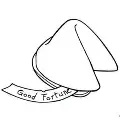By Master Trainer Jenna Kozub
The end goal, when working with a student and/or client is for them to improve either their number of skills or their independence in completing a series of skills. When determining skills to focus on, we must be sure to select those are are deemed most essential for the success of the individual.
When I was a Special Education teacher in a Private Therapeutic Day School setting, a student of mine had little to no experience with using a calculator. I found this to be an essential skill for this student and incorporated this into his daily programming. The series of skills that I needed to teach included:
- Get a pencil
- Get a calculator
- Identify all the numbers on the calculator
- Identify the addition and subtraction sign on the calculator
- Identify the equal sign on the calculator
- Look at the paper (with one math problem on it)
- Input the first number from the problem into the calculator
- Select the addition sign on the calculator
- Input the second number from the problem into the calculator
- Select the equal sign on the calculator
- Pick up pencil
- Write answer on paper
Meeting Goals
To meet his goal, I required that he complete each step independently prior to moving on to the next step. The student demonstrated determination while completing these steps. The student also demonstrated interest when he would input larger numbers, and/or use the subtraction or multiplication sign, just to see what would happen. At this point, I knew I had buy-in from the student and was so impressed by his efforts and interest.
Try, Try Again
Weeks of this programming went on and multiple addition problems were made accessible on one page. We even started the same process but incorporated the subtraction sign. And then, right in the middle of his daily math session, the calculator died. The instructional staff working with this student went to get a different calculator. No big deal, right? Wrong. When he was given the new calculator the student became frustrated. The instructional staff asked the student what was wrong but the student could not communicate this to them. This student began engaging in property destruction. The student screamed, “THAT ONE!” (while pointing to the broken calculator). After prompting the student to say “it’s broken”, and de-escalating the situation, it became evident that the student simply did not know what to do with this new calculator. So, we learned we needed to support him in generalizing this skill.
Ensuring Success
Some ways to ensure program generalization include: using common stimuli (such as the types of calculators), teaching loosely (varying the time of day or the problem being inputted into the calculator), teaching across settings (changing the location of the activity) and many more. First, we bought three different types of calculators and included the iPad and Galaxy phone calculators for a total of five different calculators. We then reviewed the steps over the different calculators:
- Identify all the numbers on the calculator
- Identify the addition and subtraction sign on the calculator
- Identify the equal sign on the calculator
- Look at the paper (with one math problem on it)
- Input the first number from the problem into the calculator
- Select the addition sign on the calculator
- Input the second number from the problem into the calculator
- Select the equal sign on the calculator
Making Sure It Sticks
To ensure that this skill was completely generalized, we reached out to the students’ parent/guardian and informed them of what we learned. In no way did I want this student to only be able to complete this skill at school. I wanted him to be able to use it at home when completing homework, or even at a future job. We offered to do a parent training to ensure they would teach the program the same way. The parent agreed and requested that we send any materials he needed to use with him.
Moving forward, it was critical that the students’ skills would be programmed for generalization. Program Generalization occurs when a behavior occurs outside of its learned environment. In order to achieve our goal of student success, we need to remember that success is not when they complete it in their learned environment, but rather, when the student can go into their toolbox of skills and apply that skill without us.
 By using our site, you consent to our use of cookies to enhance functionality and analyze site performance.
By using our site, you consent to our use of cookies to enhance functionality and analyze site performance.